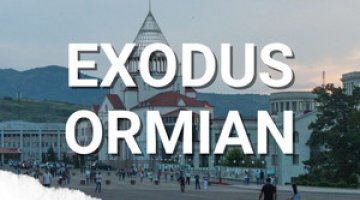Threat of chaos in Armenia
On 17 July, an armed group of thirty men calling themselves the Fighters of Sassoun occupied a police station in Yerevan and took several policemen hostage (they were released a few days later). The fighters, who are the armed wing of the nationalist organisation ‘Founding Parliament’, are mainly veterans of the war in Nagorno-Karabakh, and they demanded the release of Zhirair Sefilian (the leader of the organisation who was detained in June this year) and the dismissal of President Serzh Sargsyan. The police trapped the men inside the station and appealed to the group to lay down their arms. Unexpectedly, the fighters received support from the Armenian public. Thousands of people have been taking to the streets of Yerevan every day to demonstrate support to the fighters, who are viewed as national heroes. The protesters declare that they will not allow the building to be taken by storm. Numerous clashes with the police (with both fighters and demonstrators involved), mass arrests, and beatings of demonstrators and law enforcement officers have been seen. Members of the Founding Parliament are being arrested in Armenia. The opposition has also become more active, criticising the government for the existing situation and appealing for a peaceful resolution of the crisis. President Sargsyan has also received criticised for his allegedly conciliatory stance on the Nagorno-Karabakh issue during the current peace talks.
Commentary
- The fighter group’s attack served as a detonator for the deep socio-political crisis which had been accumulating in Armenia for years. The sources of the crisis include the public’s frustration as a result of the tough economic situation, the ineffective oligarchic system that cannot be reformed, and the lack of confidence in the political class. The so-called ‘Four-Day War’ in Nagorno-Karabakh on 2-5 April this year served as a catalyst for the crisis. This included Azerbaijan’s attack (most probably consulted with Moscow) and led to Armenia losing several combat positions and over 90 soldiers,. When the fighting was over, talks to resolve the conflict were launched under Russia’s patronage. The proposed solutions include withdrawing Armenian troops from part of the occupied territories without determining Nagorno-Karabakh’s status. The combination of public frustration and the Nagorno-Karabakh issue, which is very important to Armenians, has led to this outbreak of political crisis.
- Public support for the fighters has put the government in a difficult position. The continuation of the present situation adversely affects the government’s prestige, while a storm and liquidation of the group may trigger public unrest on a massive scale. Whatever the solution to the crisis over the occupied police station, internal chaos in Armenia is likely to deteriorate in the coming weeks. This is even more likely as there is little chance that the situation will change as a result of internal political processes. This is the case because the situation has been determined by the geopolitical deadlock the country has found itself in (the unresolved conflict over Nagorno-Karabakh and its dependence on Russia). Given the lack of any external catalyst to change and the awakened hopes that the situation might improve, as well as the outburst of patriotism, this political crisis adds to the likelihood that the developments in Armenia may become destructive. Further military incidents, acts of terror, massive public unrest and even an Armenian resumption of the war over Nagorno-Karabakh cannot be ruled out.




